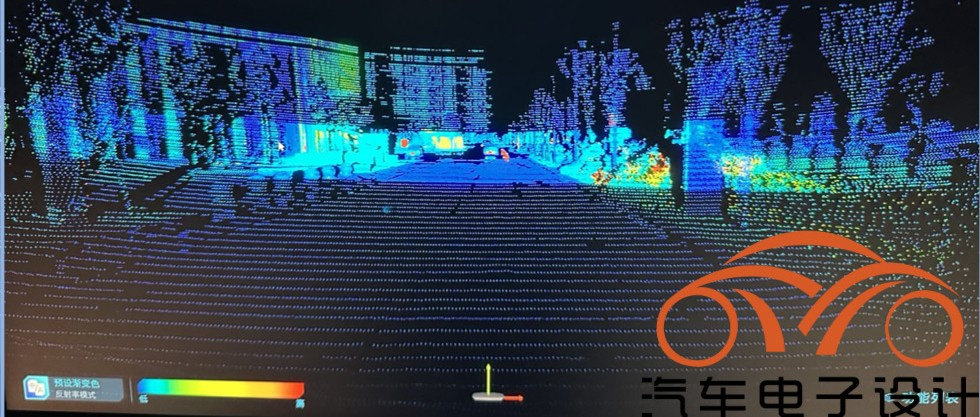Author: Zhu Yulong
Lidar is a highly controversial sensor on the market, and the primary debate is about its necessity.
The firm supporters of Lidar, including Waymo, face significant obstacles in implementing their L4 route, whereas Tesla, which started with L2 and its Autopilot performance not delivering as expected, is a staunch opponent of Lidar. Although Audi and Mercedes have used Lidar in their production models, we have not seen any significant improvements in overall performance.
In the field of intelligent automobiles, Chinese new forces have always been at the forefront. This year, NIO’s ET7, Xpeng’s G9, and Li Auto’s L9 have used Lidar products from three representative companies: Innovusion, Hesai, and Suteng, which is undoubtedly worthy of our observation.
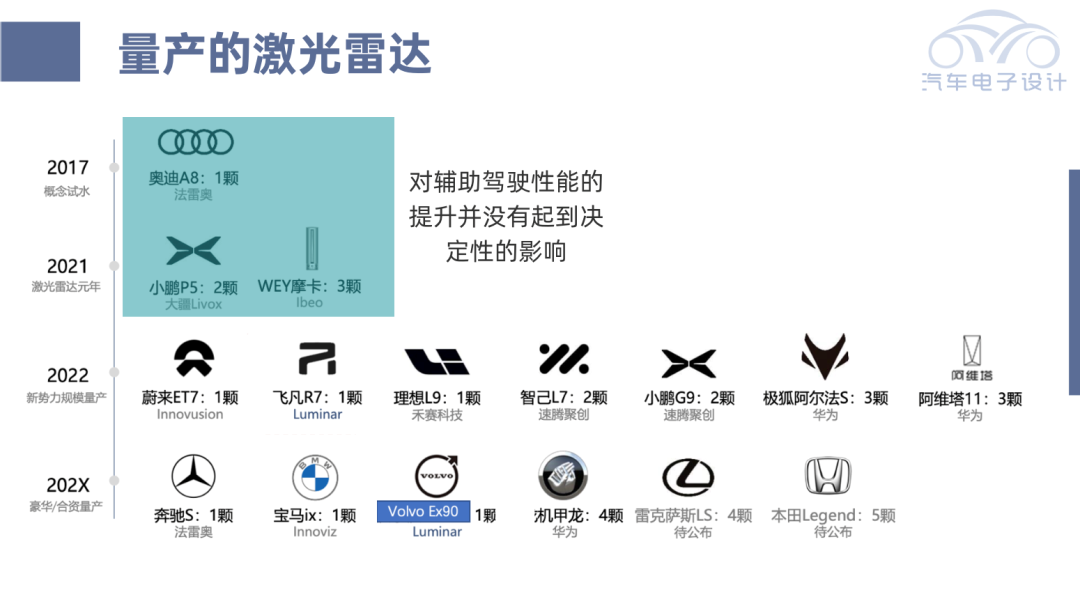
By creating a three-dimensional image from Lidar’s point cloud segmentation, it has high precision and resolution. Its advantage lies in reading object information (including detection distance/angle resolution, etc.) and does not require depth algorithms, which is a solution that all smart assisted driving development above L3 will adopt, except for Tesla.
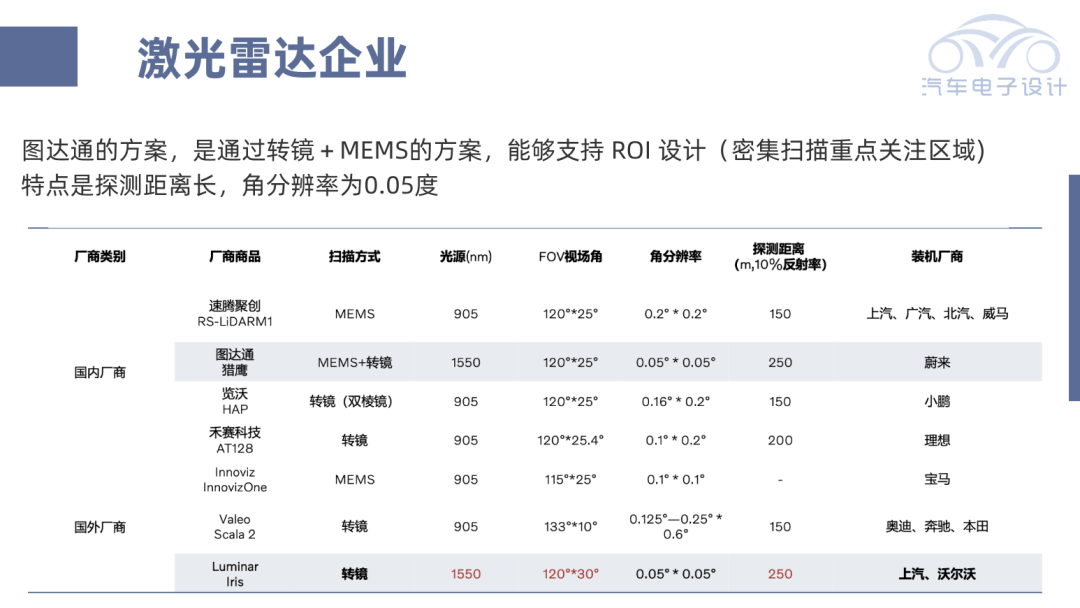
Innovusion’s product working principle
The Innovusion annual media salon has just ended, and it is the perfect time to talk about this production product used in NIO cars.
Lidar consists of four basic components: laser emitter, scanner, receiver, and processing equipment.
Innovusion’s solution here is to use a 1550nm fiber laser, mirror + vibration mirror plan, APD avalanche diode, and FPGA processor. The mirror+vibration mirror two-dimensional scanning plan and the use of the 1550nm laser emitter enable the Lidar to scan a wider range with more power, with a detection distance of up to 500 meters, 250 meters at 10% reflectivity, and the highest resolution of 0.06°*0.06°, with a horizontal field of view of 120°.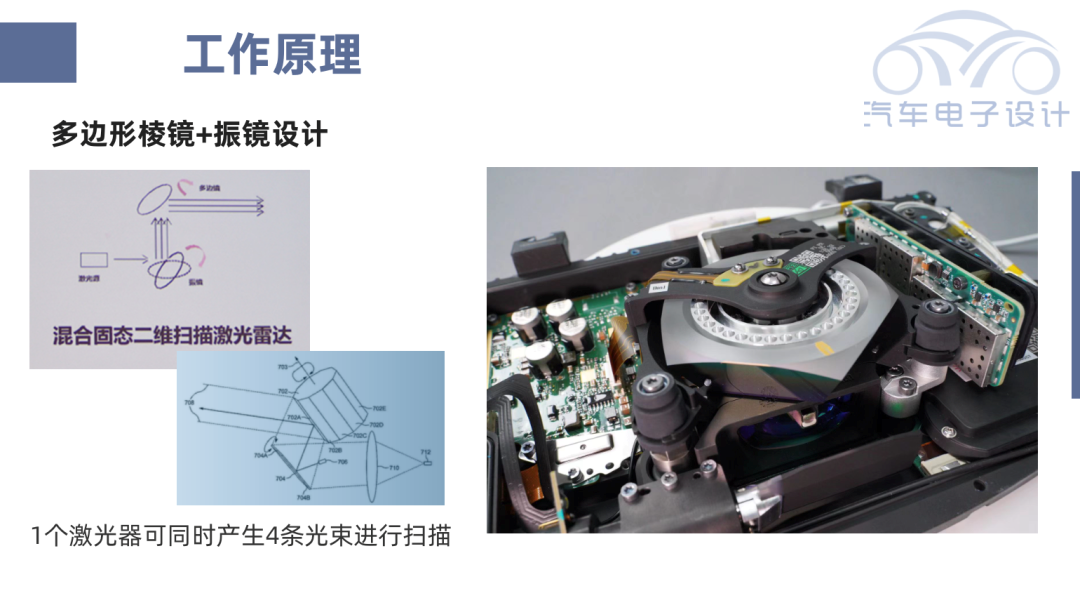
In this product, the rotating mirror is responsible for horizontal scanning, while the vibrating mirror is responsible for vertical scanning. The laser beam is emitted from the light source, reflected on the vibrating mirror, and then reflected to the outside on the rotating mirror. It returns to the receiving optical path from the tested object, and is obtained by the processing circuit. If multiple light sources are illuminated at slightly different angles and emitted to the vibrating mirror, multi-line scanning can be achieved. The optical fiber adopts a 1-to-4 method, and four channels perform scanning at the same time.
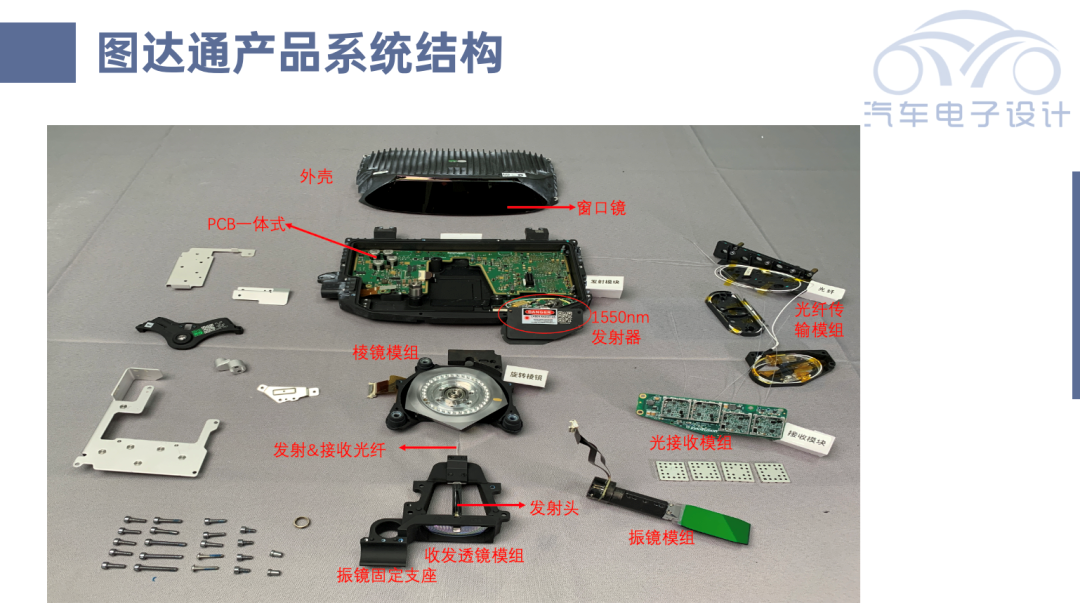
In the figure below, we can see the entire optical fiber transmitter, which uses a 1-to-4 mode (1 red sending and 4 blue receiving).
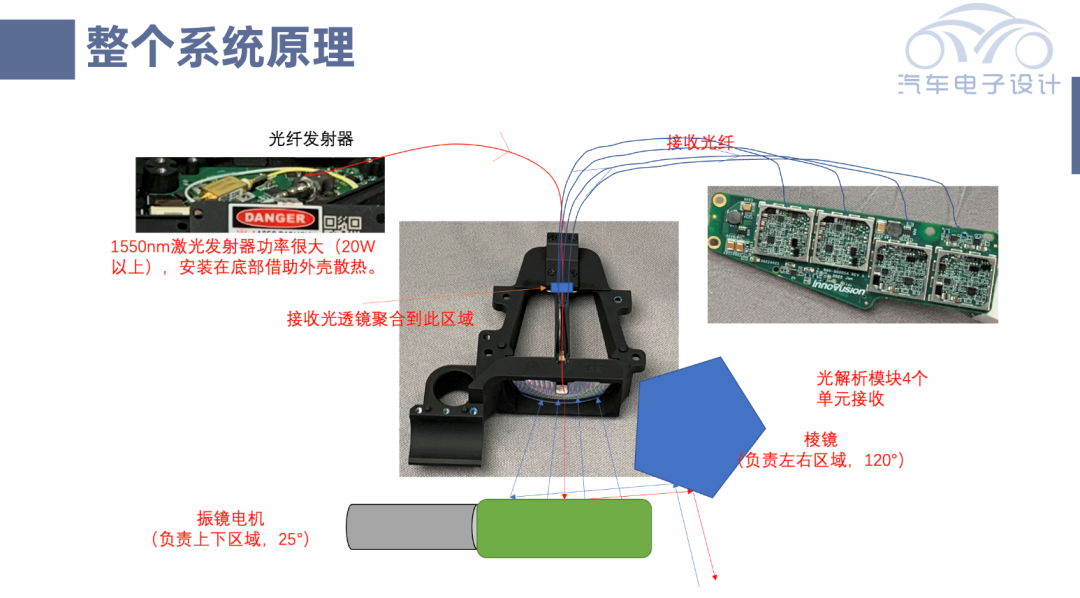
Usually, only one optical fiber laser is needed for the 1550 nm laser. Talcon, a TDC product, adopts a 1-to-4 design, and one laser can simultaneously generate four beams for scanning. The optical fiber laser includes a pump source and a seed source. Because the 1550 nm laser transmitter power is relatively large, it is installed at the bottom with the help of an aluminum alloy shell for cooling.
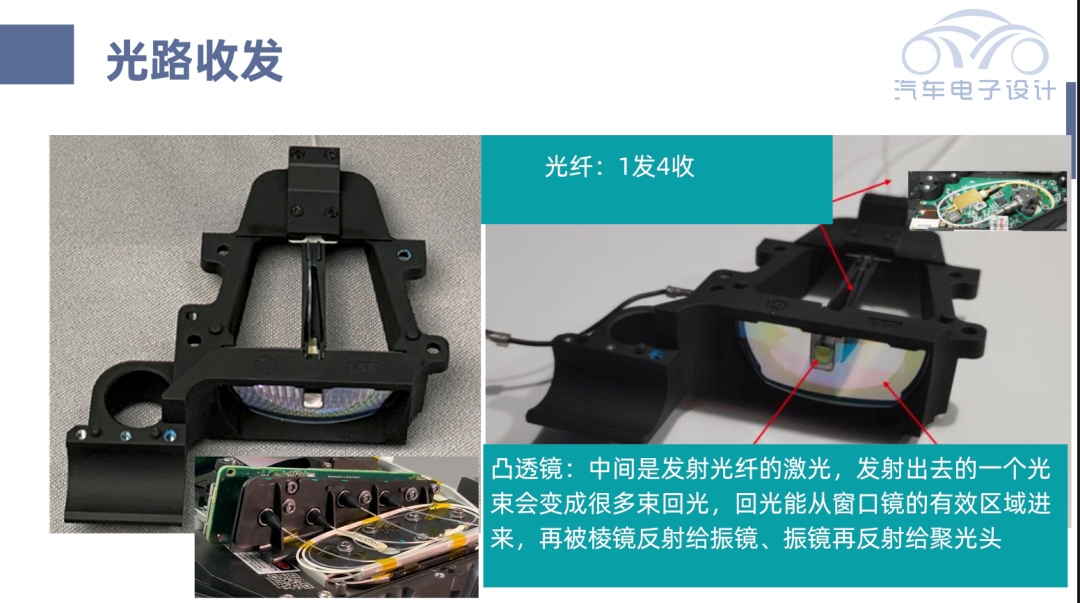
The LIDAR is top-mounted, and the reflected line is obliquely upward, so the prism reflecting surface is a trapezoid. Here, the 4 channels of the returned fiber interface correspond to 4 APDs (receiving stable and most reliable) for processing. The received optical signal is transmitted to the photonic receiver through the optical fiber, processed into an amplified electrical signal, and then transmitted to the core processor.“`

From the perspective of system cost, the cost of optical path structure, APD and optical fiber is high, while the cost of the entire circuit part is well controlled.
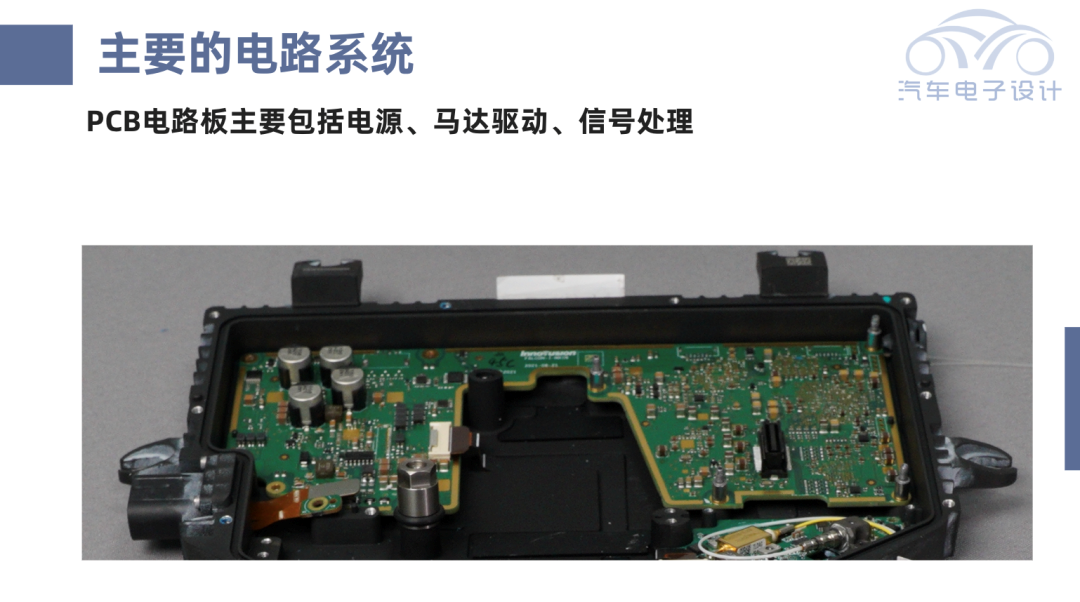
Advantages of Tudaxun LiDAR
From the application level, I think that for the whole forward vision detection, this LiDAR belongs to the role of warning and scanning. The objects scattered at 100 meters are challenging for human eyes to identify. By detecting objects with a size of 20*40cm up to 100 meters away and with a clear point cloud (5-6 points), such as the 20cm tires ahead of the road, the point cloud output of the drivable area can be used to alert the automatic driving domain controller.
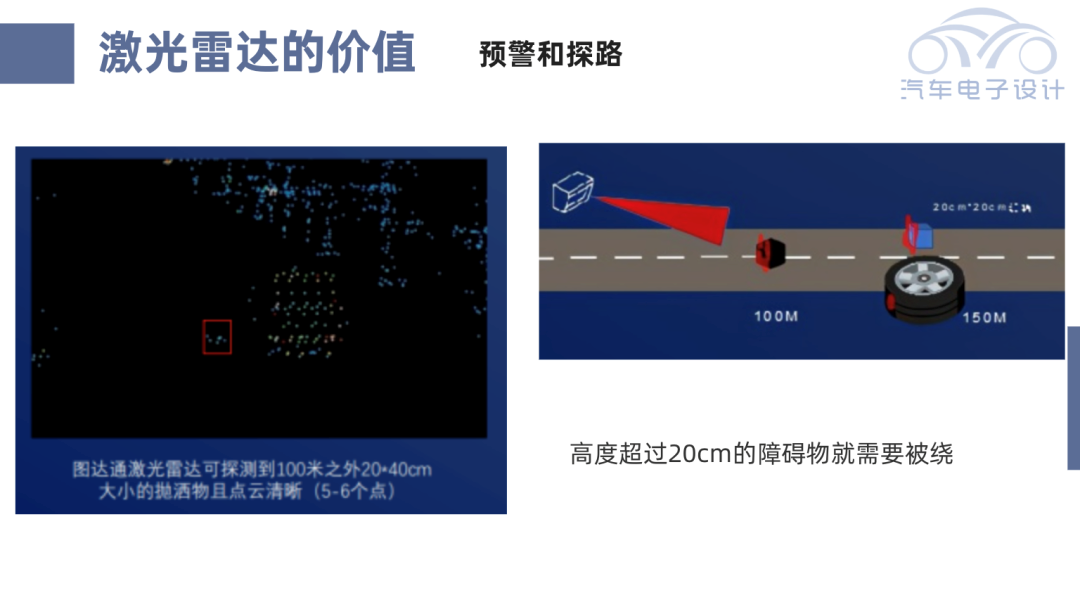
Tudaxun’s LiDAR scanning adopts a two-dimensional scanning mode, with the intermediate high-density area as the ROI area, and the point cloud density is about six times that of the non-ROI area. By sending instructions to the LiDAR through the domain controller, the ROI area can achieve real-time dynamic adjustment within the entire FOV, which is of great significance in detecting and tracking small targets at far distances and in large curved turns.
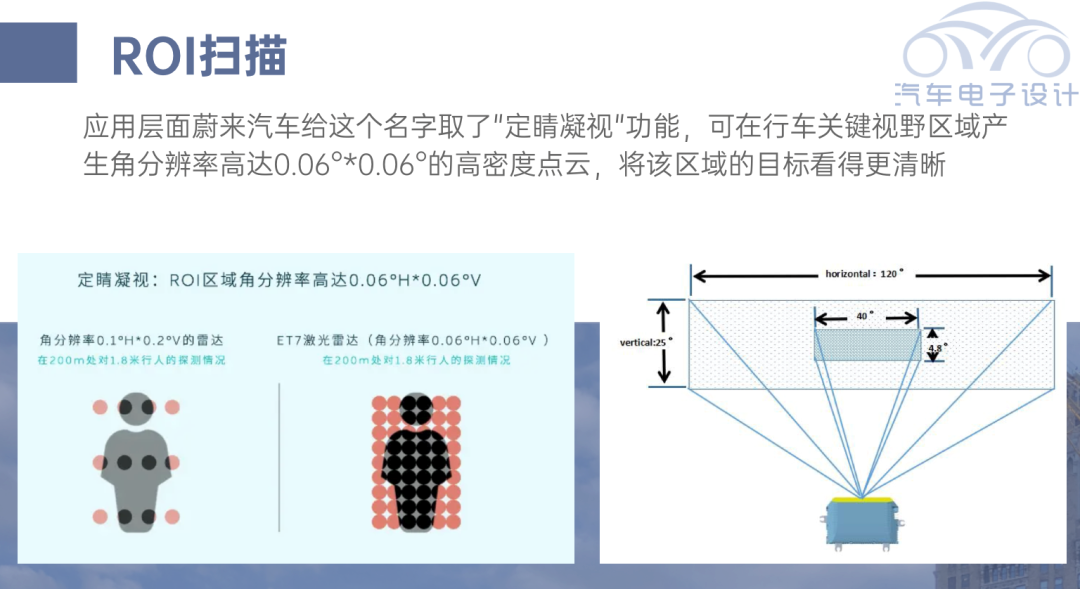
Summary: Personally, whether it is a LiDAR priced at 10,000 yuan or 4,000 yuan, its value is not important in the early stage, but more a kind of technological exploration. In the long run, after the deployment of LiDAR, it is worth our continuous observation on how advanced driving assistance systems can achieve in perception and planning.
### 这是一个 Markdown 文本
下面是一个 **列表**
- 第一项
- 第二项
- 第三项
这是一个链接:[百度](https://www.baidu.com/)
这是一个图片:

这是一个代码块:
python
print(“Hello World!”)
这是一个表格:
| 项目 | 价格 | 数量 |
| :--------: | :----:| :--: |
| 电脑 | $1600 | 5 |
| 手机 | $12 | 12 |
| 管线 | $1 | 234 |
以下是 HTML 标签:
<p>这是一个段落</p>
<hr>
<blockquote>
这是一个引用
</blockquote>
<h1>这个是 H1 标题</h1>
<strong>这是加粗的文本</strong>
<em>这是斜体的文本</em>
### This is a Markdown text
Here is a **list**
- Item 1
- Item 2
- Item 3
This is a link: [Baidu](https://www.baidu.com/)
This is an image:

This is a code block:
python
print(“Hello World!”)
“`
This is a table:
| Item | Price | Quantity |
|---|---|---|
| Computer | $1600 | 5 |
| Phone | $12 | 12 |
| Pipeline | $1 | 234 |
Below are HTML tags:
This is a paragraph
This is a quote
This is an H1 title
This text is bold
This text is italicized
This article is a translation by ChatGPT of a Chinese report from 42HOW. If you have any questions about it, please email bd@42how.com.
